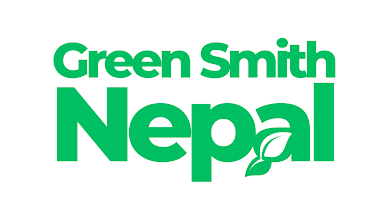In an unprecedented display of collective anger, Nepal's Prime Minister K. P. Sharma Oli resigned and fled the country on September 9, 2025, just two days after large-scale demonstrations, predominantly organized by Generation Z, erupted across the nation. What began as outrage over a government ban on social media platforms quickly escalated into a full-blown revolt against deep-seated corruption, rampant nepotism, and a pervasive jobs crisis that has long fueled youth disillusionment.
The Spark: Social Media Blackout
The immediate trigger for the massive unrest was the Government of Nepal's decision on September 4, 2025, to impose a nationwide ban on 26 popular social media platforms, including Facebook, X, YouTube, LinkedIn, Reddit, Signal, and Snapchat. The government justified the ban by citing the platforms' failure to register under new rules from the Ministry of Communication and Information Technology, as well as concerns over misinformation, cybercrime, and national sovereignty. Only a few platforms like TikTok, Viber, WeTalk, Nimbuzz, and Poppo Live remained accessible due to compliance.
This move was seen by critics as an authoritarian attempt to suppress dissent and control the digital narrative. For Nepal's predominantly young population, especially Generation Z (born between 1997 and 2012), social media is not merely for entertainment; it is an essential tool for business, education, networking, and a vital public sphere for expressing concerns and mobilizing. The ban had severe economic implications, disrupting commerce, threatening investor confidence, and affecting the domestic technology sector.
The Fuel: Corruption, Nepotism, and the Jobs Crisis
Beneath the immediate outrage lay years of simmering frustration. Critics alleged that the social media shutdown was specifically prompted by a viral "Nepo Kid" trend. This trend vividly highlighted the stark contrast between the lavish lifestyles of political leaders' children—flaunting luxury brands, foreign degrees, and expensive holidays—and the daily struggles of ordinary Nepalis, many of whom are forced to seek work abroad. With the average Nepali making US$1,400 per year, this conspicuous display of wealth by the ruling elite and their families ignited significant public anger.
A deeper, structural issue driving the unrest was Nepal's severe jobs crisis. Youth unemployment rates were exceptionally high, estimated at 20.82% in 2024 and 20.36% in 2023, significantly surpassing the national average. This lack of opportunities at home forces nearly 5,000 young people to leave the country every day for work abroad, contributing to an alarming 839,266 exit labor permits issued in FY 2024/25. Their remittances, accounting for 33% of Nepal's GDP, underscore a broken development model that relies on exporting its youth rather than creating dignified work domestically.
Furthermore, systemic corruption and a lack of governmental accountability were central grievances. Major corruption scandals, such as the 2017 Airbus deal that cost the exchequer 1.47 billion rupees ($10.4m), fueled public mistrust. The practice of granting immunity to politicians for "policy decisions" further shielded them from investigation. Protesters demanded governmental accountability and transparency, frustrated by a political class perceived as insulated from the hardships of their constituents.
Escalation to Revolution
On September 8, 2025, tens of thousands of young people, many in school uniforms, converged in Kathmandu, particularly at Maitighar Mandala and around the federal parliament building, New Baneshwor, defying curfews imposed in several major cities. Initially organized as a peaceful rally by Anil Baniya of Hami Nepal, the demonstrations quickly turned violent after security forces responded with tear gas, water cannons, rubber bullets, and even live ammunition when protesters attempted to breach the Federal Parliament.
The crackdown resulted in at least 19 protestors killed and over 347 injured on September 8 alone. Home Minister Ramesh Lekhak resigned amidst the chaos, and by evening, the government, under immense pressure, lifted the social media ban. However, the violence had irrevocably changed the nature of the protests, shifting the demand from restoring social media to a complete overthrow of the government.
Oli's Downfall
The following day, September 9, saw the protests intensify, even after Prime Minister K. P. Sharma Oli, reportedly advised by Nepali Army commander Ashok Raj Sigdel, resigned and fled to an army barracks. This was despite his earlier directive to his Communist Party of Nepal (Unified Marxist–Leninist) ministers not to resign.
Protesters torched and vandalized numerous government buildings, including the parliament building, the Supreme Court, the president's residence, the prime minister's residence, and the headquarters of the UML and Nepali Congress. Minister of Agriculture Ram Nath Adhikari and Health Minister Pradip Paudel, along with 21 MPs from the Rastriya Swatantra Party and all MPs from the Rastriya Prajatantra Party, also resigned. The Nepali Army deployed troops, closed, and occupied Tribhuvan International Airport as protesters attempted to block political leaders from fleeing, leading to diverted and canceled international flights. Tragically, the wife of former official Jhala Nath Khanal was killed when her home was set ablaze by protesters.
By September 10, Nepali Army forces were seen patrolling critical areas in Kathmandu, making arrests, while General Sigdel appealed for peace amidst ongoing unrest.
The Gen Z protests underscored a fundamental disconnect between a disillusioned youth and a political establishment perceived as corrupt, unaccountable, and out of touch. Their digital-savvy, leaderless mobilization, fueled by economic hardship and political repression, proved to be a formidable force, culminating in the dramatic downfall of a sitting Prime Minister.



0 Comments